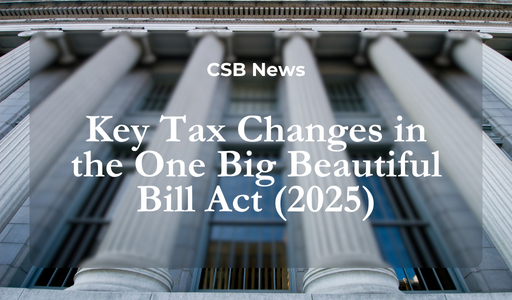Congress passed the Corporate Transparency Act (the “Act”) in 2021 to combat the facilitation of illicit activities – including money laundering, financing of terrorism, and various acts of financial fraud – by malicious actors concealing their ownership of corporations, limited liability companies, or other similar entities in the United States.
Effective January 1, 2024, and subject to certain exceptions, existing and newly formed corporations, limited liability companies, and similar entities (referred to in the Act as a “Reporting Company”) will be required to file a report with the Financial Crimes Enforcement Network of the Department of the Treasury (“FinCEN”) identifying the beneficial ownership of the Reporting Company. Reporting Companies formed after the effective date will need to include similar identifying information for their company applicant(s). Below is an overview of the reporting requirements designed to help Reporting Companies comply effectively and navigate potential legal challenges successfully.
1. Who is Required to Report?
Beneficial Ownership Information Reporting is mandated for all Reporting Companies. Typically, this includes corporations, limited liability companies (LLCs), and other entities created by filing a public document with a secretary of state or similar office, but there are exceptions. Entities that are exempt from the reporting requirements include:
- Issuers of securities registered under the Securities Exchange Act
- Governmental authorities
- Banks, bank holding companies, credit unions and money transmitting businesses
- Broker-dealers
- Investment companies and advisers
- Insurance companies
- Tax-exempt entities
- Large operating companies that employ more than 20 employees in the United States, filed federal income tax returns evidencing more than $5,000,000 in gross receipts or sales in the previous year, and have a physical office within the United States
- Subsidiaries of certain exempt entities
2. Am I a “beneficial owner” or an “applicant”?
A beneficial owner is an individual who, directly or indirectly, exercises substantial control over a Reporting Company or owns or controls not less than 25% of such Reporting Company. A difficult question is who possesses “substantial control.”
The FinCEN regulations list three indications of “substantial control”: (1) serving as a senior officer, (2) authority over the appointment or removal of a senior officer or a majority of the board of directors or similar body, and (3) the direction, determination or substantial influence over important decisions.
Senior officers are persons holding the position or exercising the authority of a president, chief financial officer, general counsel, chief executive officer, chief operating officer or any officer performing similar functions. Interestingly, corporate secretaries and treasurers are not expressly deemed “senior officers” by FinCEN.
Important decisions are defined broadly and include decisions regarding: (1) the nature, scope and attributes of the Reporting Company’s business, including the sale, lease, mortgage or other transfer of a principal asset, (2) reorganization, dissolution or merger, (3) major expenditures, issuance of debt or equity or approval of the operating budget, (4) the selection or termination of business lines or ventures or geographic focus, (5) compensation schemes and incentive programs for senior officers, (6) entry into, termination or fulfillment of significant contracts, (7) amendment of the company’s certificate of formation, bylaws, LLC agreement and significant policies or procedures.
Reporting Companies formed after January 1, 2024, are also required to report the information of each company applicant. A company applicant is the individual who files the document creating the company. If more than one individual is involved in filing, the individual primarily responsible for directing or controlling the filing will also be considered an applicant. For example, an attorney and the paralegal that pushes the button or files the formation document are both technically considered company applicants.
3. What Information Should be Included in the Report?
Existing and newly formed reporting companies are required to provide: (1) the full legal name, (2) any trade name or “doing business as” designation, (3) the business street address, (4) the state or American Indian tribal jurisdiction of formation, and (5) an IRS TIN or other identifying number of the reporting company.
For each beneficial owner and, if applicable, each company applicant, the reporting company must provide: (1) full legal name, (2) date of birth, (3) current residential street address, (4) unique identifying number, and (5) image of the document from which the unique identifying number was obtained (including a nonexpired passport, state-issued identification document, or driver’s license).
Each Reporting Company is ultimately responsible for its filing and must certify that it is true, correct, and complete.
To streamline the reporting process and provide for more confidentiality, beneficial owners and company applicants may obtain a FinCEN ID number, which may be provided in lieu of the required information. A FinCEN ID number will be most helpful to beneficial owners of multiple companies and those whose information changes often.
4. When Are You Required to Report?
Companies created prior to Jan. 1, 2024, have until Dec. 31, 2024, to file an initial report.
Companies created between Jan. 1, 2024, and Dec. 31, 2024, will have 90 days after their creation to file an initial report.
Companies created on or after Jan. 1, 2025, will have 30 days after their creation to file an initial report.
If the information in an initial report is inaccurate or there is a change in the information of the reporting company or its beneficial owners, updated and corrected reports must be filed within 30 days after the date of a change to any required information previously submitted or after the date the inaccuracy is discovered, respectively. Therefore, it is important that companies keep track of
and report any changes in the reported information for beneficial owners, including changes of addresses and new driver’s license numbers. We strongly suggest Reporting Companies take steps to ensure the required reporting information is easily accessible and up to date to make the reporting process more efficient.
5. Who will have access to this information?
Per the Act, FinCen is required to maintain the confidentiality of reported information but is authorized to make disclosures for specific purposes to certain government authorities and to financial institutions.
6. What are the Consequences of Failing to Report?
Understanding and complying with these reporting requirements is vital due to the penalties for non-compliance, including fines of up to $10,000 and imprisonment for up to two years.
7. How Do Reporting Companies Need to Process Reporting?
Reporting Companies should establish internal processes to collect, verify, and maintain up-to-date information about their beneficial owners. This information must be filed electronically through the designated system provided by FinCEN or the relevant state authority. It is advisable for businesses to maintain records of their filings and any correspondence with regulatory bodies to verify compliance.
8. Where Can You Find More Information?
For more comprehensive details and updates, businesses should refer to the official website of the Financial Crimes Enforcement Network (FinCEN). Legal advisors specializing in corporate law or compliance can also provide tailored guidance.
Conclusion Compliance with Beneficial Ownership Information Reporting is not just a legal obligation but also a critical component of corporate responsibility. Reporting Companies should be proactive to ensure they comply with the Act, either by determining they are exempt from the reporting requirements or ensuring the required reporting information is easily accessible and up to date. Regular consultation with legal experts and staying informed about regulatory changes are best practices that can help Reporting Companies navigate this complex landscape effectively.


















